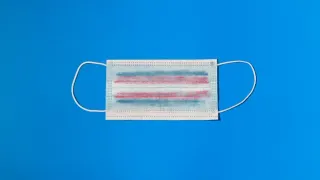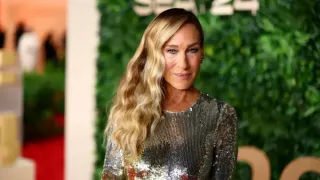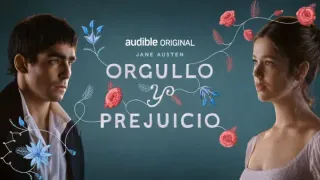July 13, 2014
Hofmann & Bess: Two-fer at BAM
Kilian Melloy READ TIME: 4 MIN.
While not exactly a patron saint, German �migr� painter Hans Hofmann was critical to the founding of the Berkeley Art Museum. An artist of impressive range and a highly respected teacher who played a key role in the development of Abstract Expressionism - Helen Frankenthaler, Frank Stella, Lee Krasner, Red Grooms, Ray Eames and Louise Nevelson were just a few of his illustrious students - Hofmann taught at UC Berkeley in the summers of 1930 and 1931, the same year he had his first American solo exhibition at the Legion of Honor. The experiences, he once said, launched his life and career in the U.S. He settled in New York in 1932.
In the 1960s, in a demonstration of his gratitude to UCB, he gave the institution nearly 50 of what he considered his best paintings and pledged $250,000 of seed money to bolster the fledgling museum that would become BAM. One of his first gifts, the exuberant color plane painting "Summer Bliss" (1960), a shout-out to nature, landscape and the sheer joy of painting punctuated by rectangular blasts of joyous color - hallmarks of Hofmann's passionate work - is currently on view along with a dozen paintings the artist personally selected as part of his gift. Dating from 1942 through 1963, and combining structural elements of Cubism and Fauvist color with a singular, acutely personal visual language that included thick, sensual layers of impasto, they're part of "Hofmann by Hofmann," a new show up between now and the museum's closing at the end of the year. (Preparations are already underway for the move to its new building in downtown Berkeley.)
In Paris, where he had spent a decade at the turn of the 20th century, Hofmann encountered Picasso and Matisse, whose dual influences are displayed in "Ecstasy" (1947), though for him it was the medium, "incited by reality" and fueled by imagination, that was paramount. "Nature is visual, our greatest stimulus," he said, and one can feel that in "Above Deep Waters" (1959), a skyline terrain suffused with natural wonder and color so vivid it's nearly aural.
Hofmann taught to support himself, first in Europe, then in New York and Provincetown, where he maintained a studio; though teaching had its pleasures, it took crucial energy away from his own career. He closed his schools, and with his devoted students having left home, so to speak, he had a surge of creativity late in life, evident in these large canvases. More than half of the exhibition's paintings were completed when Hofmann was well into his 70s and 80s. It was his time, his turn. To be in a room surrounded by them is to be invigorated by his unflagging vitality. Through Dec. 21.
Also on view at BAM: "Forrest Bess: Seeing Things Invisible," a retrospective of small-scale dreamscapes infused with enigmatic tribal symbols and anthropological references that testify to a tormented man's quest to make himself whole. Bess' relentless drive to merge his male and female sides, not an unreasonable desire on its face and an understandable source of conflict, grew into a full-blown obsession. He ardently believed that becoming a hermaphrodite was the path to immortality, an idea he went to extraordinary lengths to achieve. He claimed to have enlisted a local doctor to perform several surgeries to transform him - the anatomical details are not for the squeamish - but it's likely he operated on himself. An exhibition case of archival materials contains letters in which he attempts to persuade medical professionals of the validity of his theories - he even sent an appeal to Pres. Eisenhower - as well as graphic photographs of his altered genitals. Remarkably, he survived the procedures, but they precipitated a downward slide in his health, not to mention salacious curiosity.
Trapped inside his troubled mind, Bess' narrow field of vision limited his life and the scope of work that rarely rises above the idiosyncratic. But despite psychological travails and living in virtual isolation in a shanty near Bay City, Texas, Bess, a fisherman by day and self-taught artist by night, attracted a following and representation by a New York art dealer who had Pollock, Rothko and Still on her client list. Like one of his idols, Vincent van Gogh, Bess suffered from hallucinations; they informed his art, along with his eccentric medical theories, Jung's philosophy of the collective unconscious, and Australian aborigine rituals. He often painted in a nether zone between sleep and waking that allowed his preoccupations to reign ("Tree of Life: Sign of the Hermaphrodite," 1953). But oil paintings such as "Untitled" (1957), in which a winding yellow-and-black railroad track vanishes into the crimson distance; or his 1951 homage to Albert Pinkham Ryder, a desolate expanse defined by shadowy rocks poised like giants about to rise against a waning sunset; and "Complete Freedom" (1970), where paradise awaits beyond mountain peaks on the horizon in a world devoid of people, suggest nocturnal visions, premonitions and an all-too-real loneliness. Through Sept. 14.






